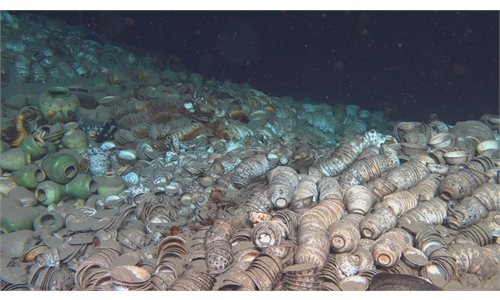ARTS / CULTURE & LEISURE
Shandong focuses on marine, canal archaeology for underwater findings

Photo: sdchina.com
Themed on marine and canal archaeology, the Underwater Archaeology Forum concluded on Monday in Jinan, East China's Shandong Province.More than 40 experts and scholars from 21 institutions attended the event, which is one of the academic activities under the National Archaeological Conference co-hosted by the Underwater Archaeology Specialized Committee of Chinese Archaeology and the Shandong Province Water-related Cultural Heritage Protection Research Society.
A total of 13 reports were presented on marine archaeology and canal archaeology, and in-depth discussions were held about subjects such as underwater archaeological technology, changes in the historical status of ports and harbors, and underwater cultural relics protection and management.
Tang Wei, director of the National Center for Archaeology, pointed out that in 2023, the Regulations for Underwater Archaeological Work will be promulgated and implemented to provide scientific standardized norms for underwater archaeological work.
"The National Center for Archaeology will review underwater archaeological projects and carry out underwater archaeological surveys in East China and other places in conjunction with the upcoming activities of the fourth national census of cultural relics."
Wang Shougong, the secondary inspector of the Shandong Provincial Department of Culture and Tourism, also said at the event that Shandong, an important birthplace of Chinese civilization and Confucian culture, has plenty of opportunities for underwater archaeology.
He claimed that Shandong has closely followed underwater archaeology, such as establishing a research center for underwater archaeology in 2015, and important results have been achieved during an underwater archaeological survey of Dongping Lake and its submerged areas, as well as underwater archaeological investigations into shipwrecks in Weihai Bay from the first Sino-Japanese War (1894-95).

